Three uncharged capacitors of capacitance C1 C2 and C3 are connected as shown in figure to one another and to points A B and D potentials ϕA ϕB and ϕD. Determine the potential ϕO at point O.
We have q1 + q2 +q3 = 0
Related Solutions
Three uncharged capacitors of capacitance C_1,C_2 and C_3 are connected to one another as shown in figure. The potential at O will be
View SolutionThree uncharged capacitors of capacitance C_1,C_2 and C_3 are connected to one another as shown in figure. The potential at O will be
View SolutionFour capacitors, , are connected as shown in the figure. A potential di fference is applied between points What should the relationship between the capacitances of the capacitors be so that the potential difference between points is zero?
View SolutionThree capacitors are connected as shown in the figure . The potential at point O is equal to
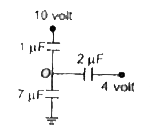 View Solution
View SolutionThree capacitors are connected as shown in the figure . The potential at point O is equal to
 View Solution
View SolutionThree uncharged capacitors are connected as shown in the figure. If potentials at point P, Q and R are maintained at 1V, 2V, 3V respectively, then potential at O becomes
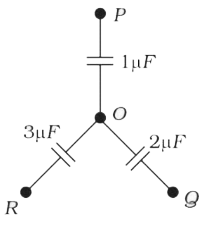 .View Solution
.View SolutionThree uncharged capacitors of capacitane C_1 = 1muF, C_2 = 2muF and C_3 = 3muF are connected as shown in figure to one another and to points A, B and D potential phi_A = 10V, phi _B = 25V and phi_D = 20 V, Determine the potential (phi_0) at point O.
View SolutionThree uncharged capacitors of capacities C_1 ,C_2 and C_3 are connected as shown in the figure to one another and the point. A, B and C are at potentials V_1,V_2, and V_3 , respectively. Then the potential at will be
View SolutionTake the potential of the point B as shown in the figure to be 100 V.
(a) Find the potentials at the point c and D.
(b) If an uncharged capacitor is connected between C and D, then find the amount of charge that will appear on this capacitor
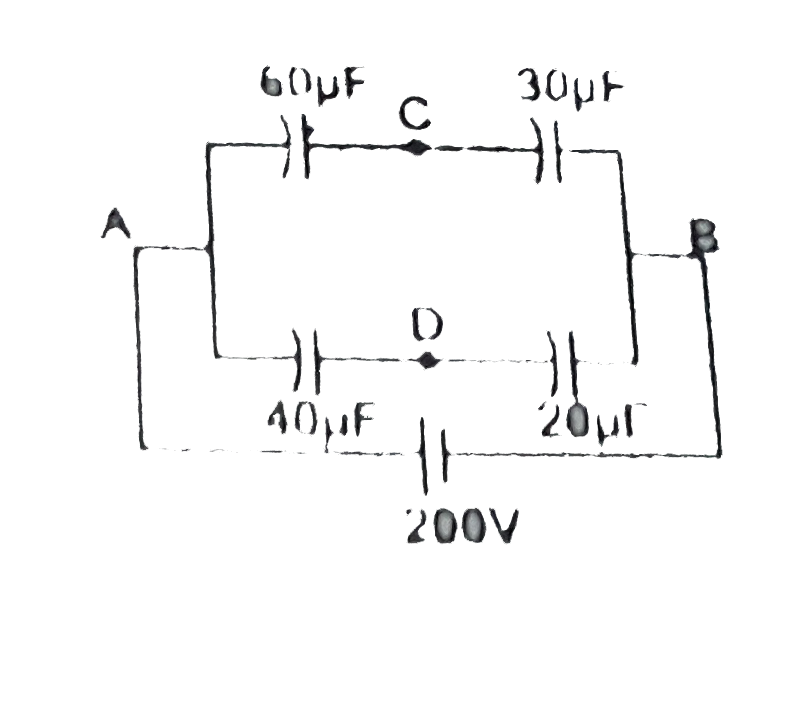 View Solution
View SolutionTake the potential of the point B as shown in the figure to be 100 V. (a) Find the potentials at the point c and D. (b) If an uncharged capacitor is connected between C and D, then find the amount of charge that will appear on this capacitor
View SolutionThree uncharged capacitors of capacitance and are connected as shown in the figure. The potential of point A, B and D are 10 volt, 25 volt and 20 volt respectively. Determine the potential at point O.
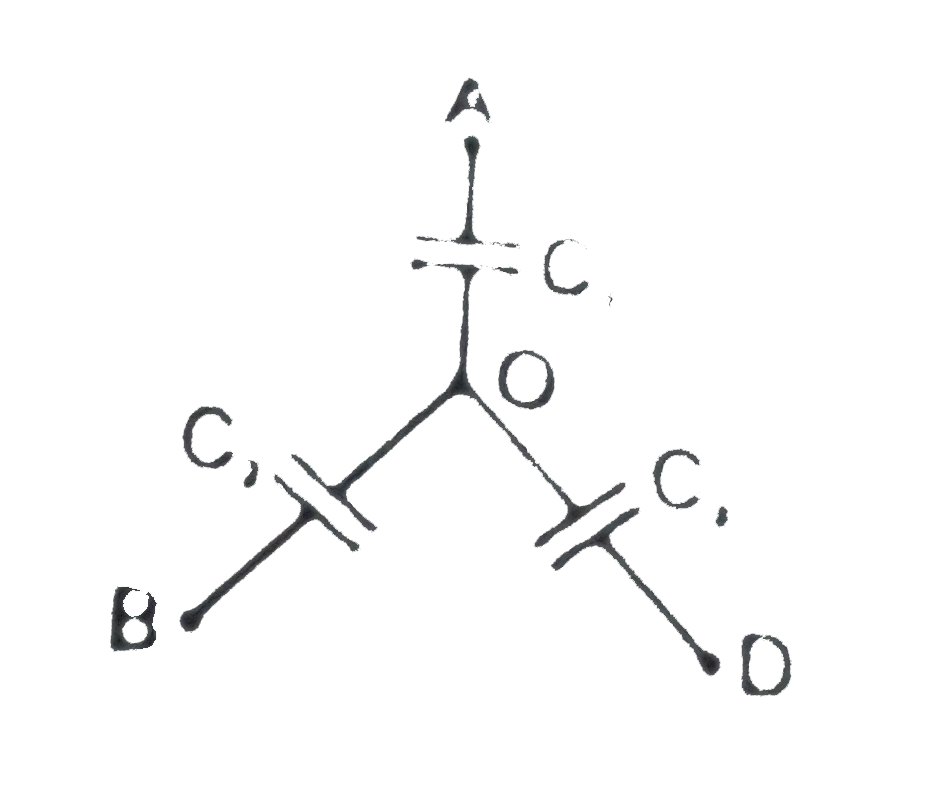 View Solution
View SolutionThree uncharged capacitors of capacitance C_(1)=1mu F, C_(2)=2mu F and C_(3)=3mu F are connected as shown in the figure. The potential of point A, B and D are 10 volt, 25 volt and 20 volt respectively. Determine the potential at point O.
View SolutionThree uncharged capacitors are connected in the circuit as shown. What should be the value of C3(in uF) so that potential difference across each capacitor is same
View Solution0.जब C1 और C2 धरिता के संधारित समंतर क्रम में संयोगजीत किए जाते हैंपरिनामी धरिता है (A) C1+C2 (B) C1C2/(C1+C2) (C) (C1+C2)/C1C2 (D)C1/C2
View SolutionConsider the connections shown in (a) Find the capacitance between the points A and B. (b) find the charge on the three capacitors. (c ) Taking the potential at the point B to be zero, find the potential at the point D.
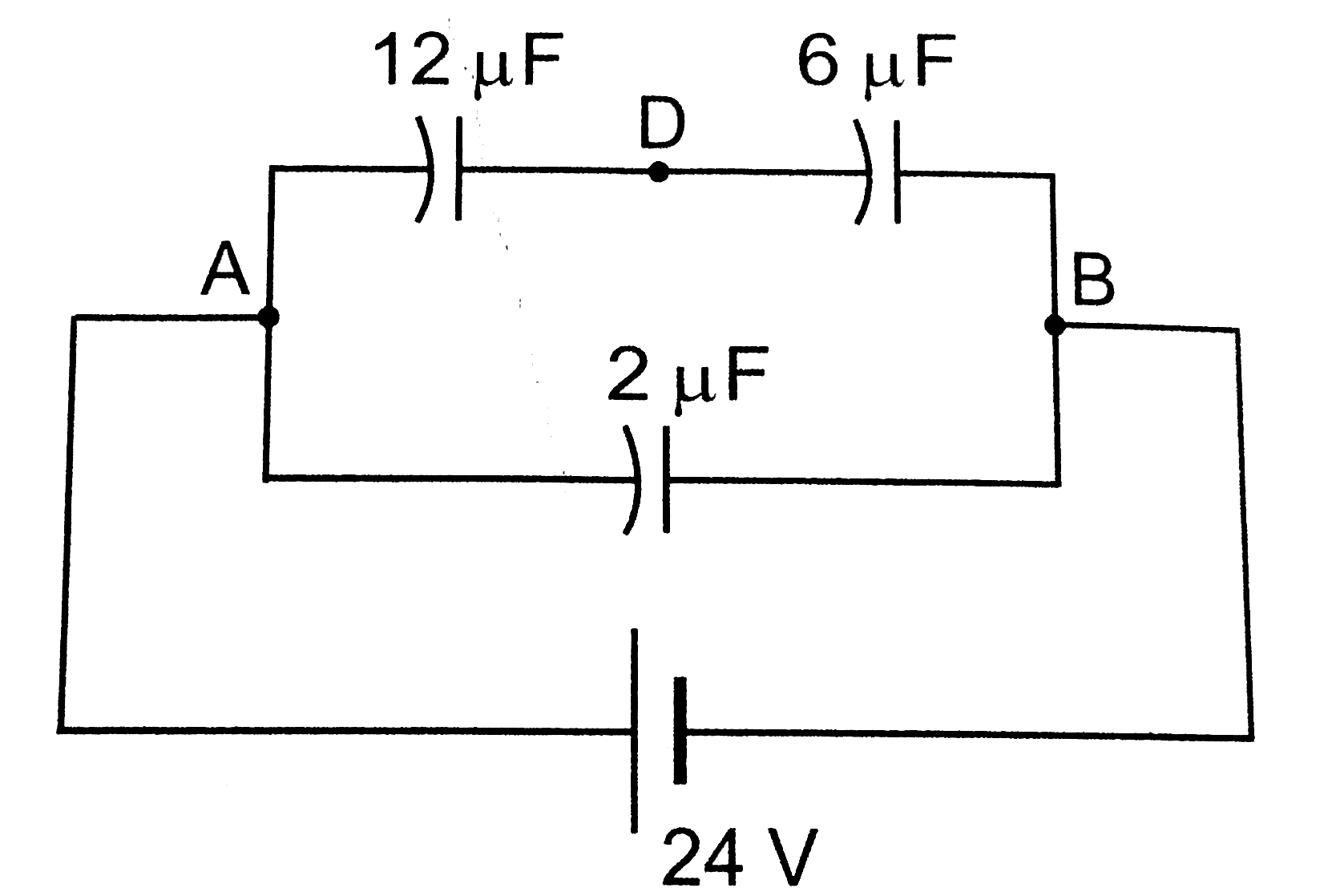 View Solution
View SolutionConsider the connections shown in (a) Find the capacitance between the points A and B. (b) find the charge on the three capacitors. (c ) Taking the potential at the point B to be zero, find the potential at the point D.
 View Solution
View SolutionConsider the connections shown in (a) Find the capacitance between the points A and B. (b) find the charge on the three capacitors. (c ) Taking the potential at the point B to be zero, find the potential at the point D.
 View Solution
View SolutionThree uncharged capacitors of capacities C_(1),C_(2) and C_(3) are connected as shown in the figure to one another and the potentials V_(1),V_(2) and V_(3) respectively. Then the potential at O will be .
View SolutionA capacitor of capacitance 10muF charged to 100V is connected to an uncharged capacitor. The effective potential now is 40 V. The capacitance on uncharged capacitor is
View SolutionFind the potential difference between the points A and B (V_(A)-V_(B)) as shown in figure. (Initially all the capacitors are uncharged)
View Solution
